7 Farm Side Hustles That Work In The Real World
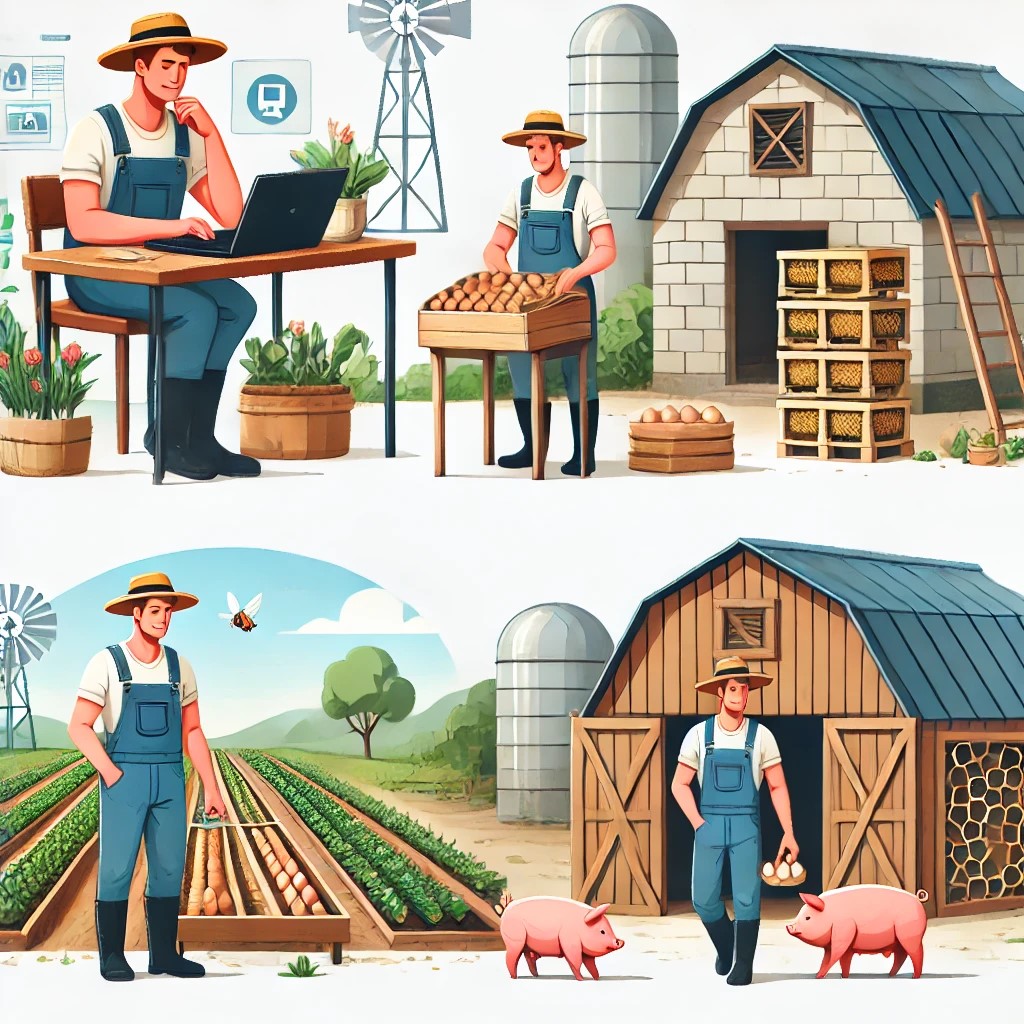 A farm side hustle can be great - if you launch it right A farm side hustle can be great - if you launch it right‘Side hustle’ has become a well-known phrase in the culture lately. The idea being you can start another enterprise in addition to your main business or job. Lots of hype around the topic, but are there any side hustles that actually can increase your income? To answer that question, let’s start with setting some parameters around the small farm side hustle. Think First, Hustle After
Never jump into any business venture without first understanding the implications and potential impact on your life. Before launching your farm side hustle, consider the following. Time is the farmer’s most valuable commodity. Every business has to balance tasks and priorities. Small farmers even more so, with fieldwork, marketing, financial management, and occasionally equipment repair. A farmer who doesn't manage priorities might find themselves losing out on both their main enterprise and the side hustle. Growth is limited by your ability to manage. There is an opportunity cost to adding new enterprises to your farm. Time is a non-renewable resource, but so is attention. You can only manage so many tasks before productivity and profitability start to suffer. Personal well-being and work-life balance. Too much of even a good thing can be too much for the farmer’s mental and physical health. Small farmers often have limited help, relying on themselves or family members for most tasks. It would be a mistake to grow your business but mess up your life in the process. By now you might be thinking ‘ wow, forget my farm side hustle, too much risk’. But that’s not the lesson here. Joel Salatin of Polyface Farms says: "My advice to anyone who wants to join in on farming is diversify. Nature is diversified, and I know you'll always have a core thing that you'll really like, but hang stuff around the edges of it’. So where does that leave the poor puzzled farmer? How do you create a small farm side hustle and avoid the pitfalls? Key Principles Of The Successful Small Farm Side Hustle1. Keep your main thing the main thing. To refer back to Polyface Farms, Joel and his family have built multiple successful farm enterprises. But they never forgot their core enterprise, pastured broilers. Perfecting and maintaining their system for pastured broilers generated profits that let them expand into other livestock, and a whole host of diverse and complementary enterprises. Joel has used the term ‘mother ship’ to describe the core enterprise that is the defining feature of the farm. So diversify intelligently and don’t neglect your ‘mother ship’ as you add new business lines. 2. New enterprises should make use of existing infrastructure where possible. This reduces start-up costs and lowers risk. An example would be using your hoop-house to grow bedding plants for sale in the spring (see more about that below). Our man Joel houses his laying hens in one of his hoop houses over the winter. By the way, ‘Infrastructure’ is not limited to physical assets. If you operate a CSA (and every small farmer should have a CSA) it’s always easier and cheaper to sell more things to customers you already have. The New Terra Farm CSA delivered eggs, chicken, lamb, pork, beef and baked goods to our CSA customers. The last two came from other local farms that I knew personally. This contributed significantly to our bottom line. My incremental cost was very low since I was already delivering to those customers. Another asset that can be monetized is your blog or website (every small farm should have an e-commerce website). More about that in the examples below. 3. Side hustles shouldn’t compete for time or space. Whether animal or or vegetable or informational (see below) side hustles that don’t take away from your main farm business are the ideal. 4. There’s another principle which applies to not just your side hustles but to all your farm products: Don’t grow anything until you know how and to whom you will sell it. My latest course Planning for Profit explains this in detail. With these principles in mind, let’s get to the small farm side hustle examples. As always, I’m only going to talk about enterprises I have personal knowledge of, either my own or a local entrepreneur I know well. Farm Side Hustle #1 - Beekeeping
As it happens, I personally know two beekeepers. One of them helped me get set up with my own hives. You can learn about beekeeping from a book (this is the one recommended by my apiarist friend), but if at all possible I recommend getting the help of an experienced beekeeper. Beekeeping fulfills the small farm hustle criteria of minimal competition for time and space. Bee hives can be set up just about anywhere and take up very little space. I placed mine just to the north of my market garden, close enough for easy access but out of our garden workflow. Daily care requires very little time, and harvest will take place in a narrow time window, usually late summer. Bees produce multiple products – honey, beeswax, and propolis. These products can be kept indefinitely, extending your sales season. One of my beekeeping friends also makes and sells his own honey garlic sauce, a real value-add for both crops. Start by researching local regulations and purchasing essential equipment like a bee suit, hives, and nucs from a reputable source. WARNING: Do NOT buy used equipment, you may be buying a load of infections and parasites. Spend the cash to do it right. If you don’t know a beekeeper, take a beekeeping course to understand hive management and disease control. The Beekeeping Made Simple courses here are suitable for beginners, and you have the option of on-line mentorship from an experienced beekeeper. They offer a free trial so you can check it out at no risk. And use coupon code SCOTT to save 20% on all eligible orders. Farm Side Hustle #2 - Pasture-Raised Livestock.
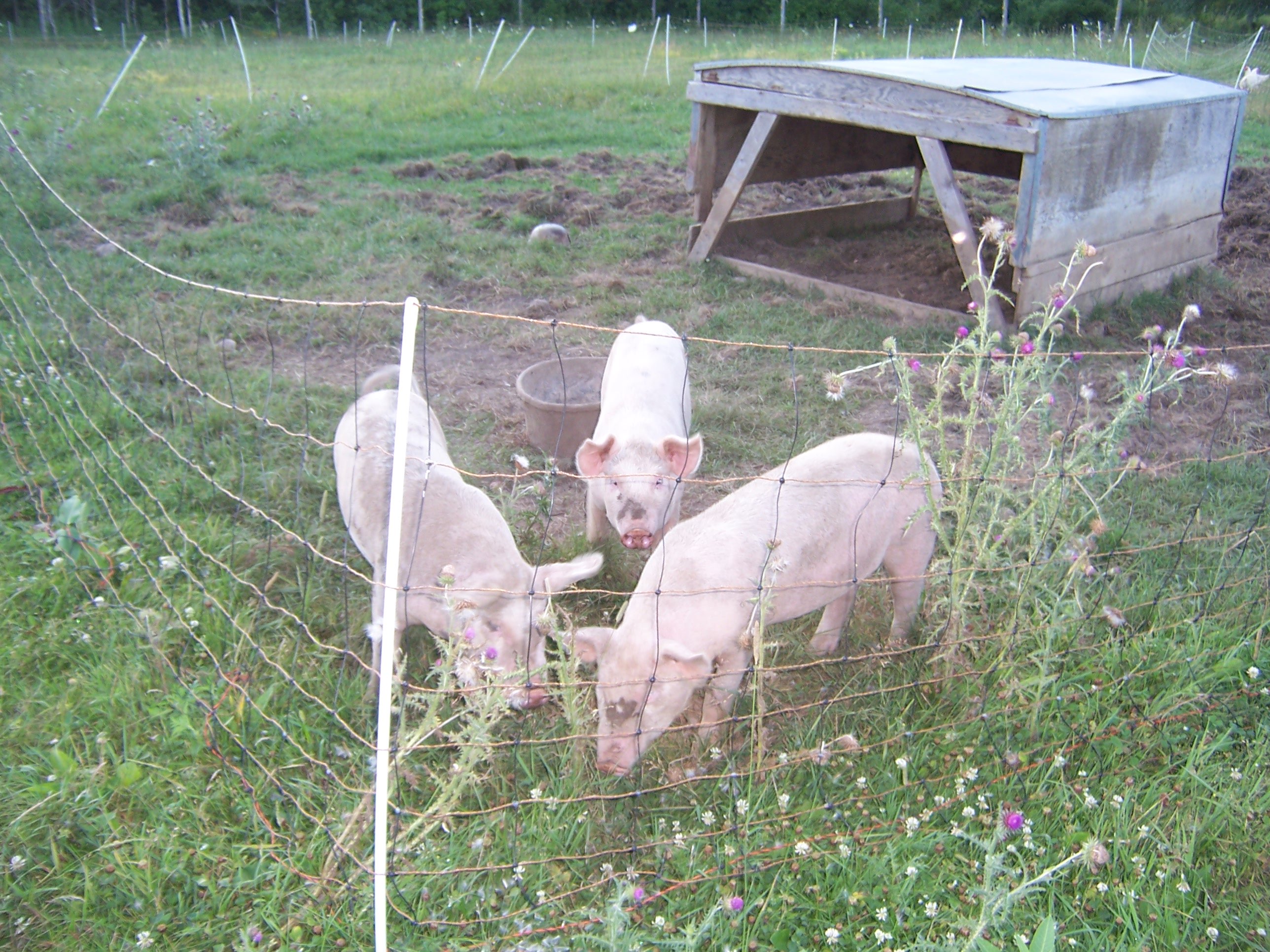 Pigs rotating into next year's garden area Pigs rotating into next year's garden areaWe raised our pigs, chickens, turkeys and lamb on pasture. We used rotational grazing - lambs=>poultry=>pigs =>garden - to maintain our fields and also to prepare the garden area for the following year’s planting. Our animal chores took only a few minutes daily, because we raised them in the non-winter months only. Simple shelter and electric mesh fencing kept them safe, and out of places I didn’t want them. Pastured pork, lamb and and poultry are premium products; I sold all I cared to raise to my CSA customers. When raised on pasture in the non-snow months, they are remarkably easy to manage. Very little competition for space or time if rotational-grazed, and integrated with your market garden rotation. And time to market can be as little as 8 weeks for chickens,
and 16-18 weeks for lambs, pigs and turkeys.Money in your pocket in weeks from start. Two keys to keeping this a side hustle:
At that level of production I can easily move the animals around the farm. My pickup and trailer can handle transport to the abattoir. And because I do several 'batches' of of each animal in a season, I don't run out of equipment, freezer space, or storage for feed. I aim for a 60% markup on my meats. I can expect to net an additional $5000-$6000 each year from my animals. And I've got 4 freezers full of my own pasture-raised meats. You can see my books How to Raise Meat Chickens and Pigs on Pasture to get started. Or get the both (and a bunch more valuable farming and gardening information) in my Complete Start Farming Pack. Farm Side Hustle #3- Grow Garlic
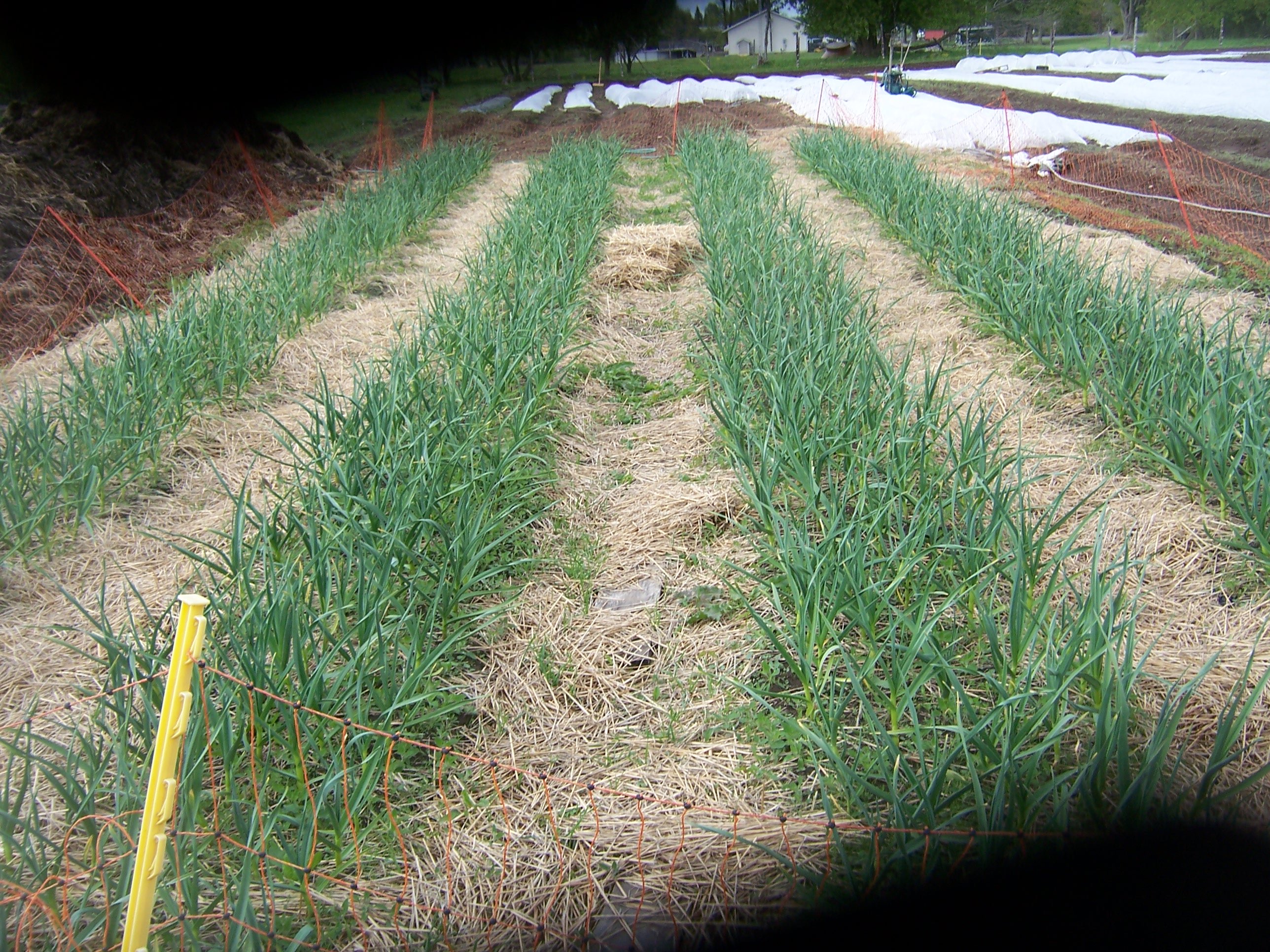 Garlic is easy to raise and profitable Garlic is easy to raise and profitableWe grow garlic in the fall for a bumper crop the following summer. Garlic is a crop with many beneficial qualities. We grow hundreds of pounds each year, for ourselves, our animals, and for our market. We're in Canadian Zone 5, with a First Frost Date of October 5. We typically put garlic cloves in the ground between mid-October and mid-November, depending on the long-range forecast. The garlic variety we have found most reliable is called Music. Research your local market to see what’s popular in your area. Fall garlic is planted after all other crops are harvested. We have successfully re-used the same beds we had planted to beans, brassicas, and lettuce. Garlic needs very little care once established; it doesn’t compete for time or space with other crops. And with retail prices in my area around $12/pound,it can bring in a nice bonus income. You can see details of growing garlic on a commercial scale in Grow The Top Ten Most Profitable Vegetables Farm Side Hustle #4 - Sell Bedding Plants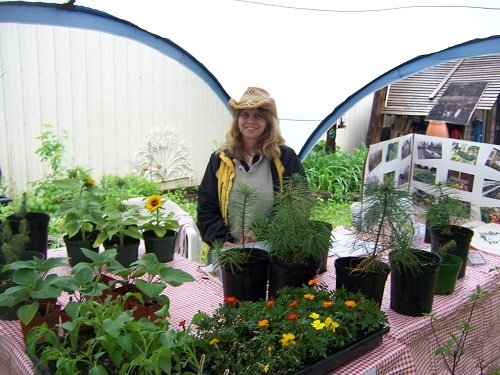 Suzie sells our bedding plants, she's more decorative than me Suzie sells our bedding plants, she's more decorative than meIf you are a market gardener, growing and selling young plants, usually annuals, herbs, or vegetables, can be a profitable side hustle that makes use of your existing infrastructure with minimal competition for your time and attention. Bedding plants are in high demand, primarily in the spring and early summer when gardeners are preparing their plots. I sold my plants at our local farmers' market, aiming for 3-4-weeks of sales at the earliest markets. This increased my sales in early spring when other crops were not yet ready. Since I already had the infrastructure –a plant starting light room and a hoop house – to grow transplants for my market garden, the incremental cost and effort to grow bedding plants were minimal. I purposely kept this enterprise on a small scale, wrapping it up before my main season stated. Like with every enterprise do your research before you get started. Find out what plants are popular in your area, and figure out where you will sell them. You can read more about how we did it here. Farm Side Hustle #5 - Host Webinars and Workshops
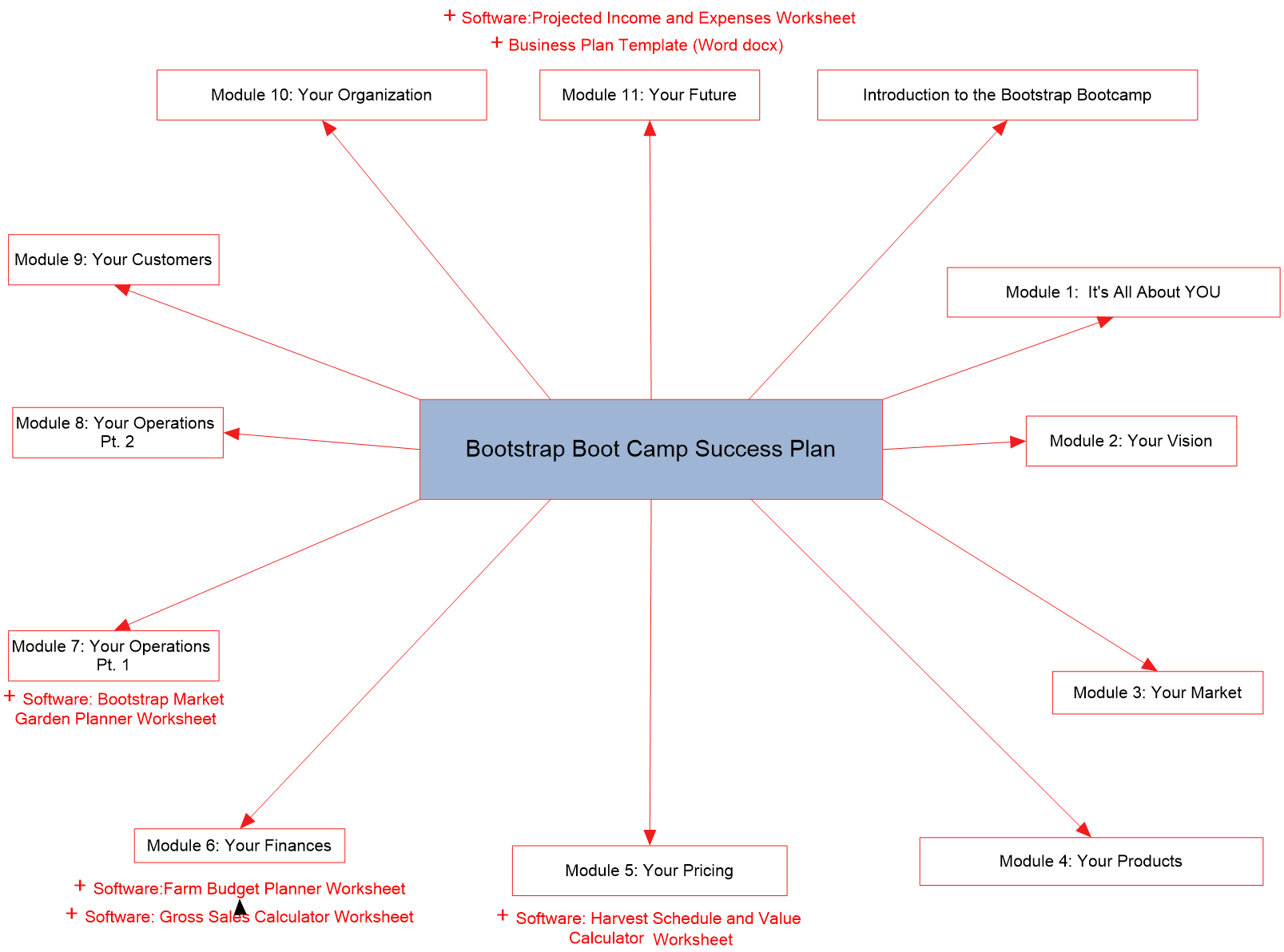 This is an outline of my Bootstrap Boot Camp Success Plan Seminar This is an outline of my Bootstrap Boot Camp Success Plan SeminarThere is a ‘growing interest’ in learning sustainable practices like composting, growing a bountiful garden, craft making or raising livestock. If you already have expertise in one or more of these areas, you can teach others and earn extra income. You can offer practical farming, gardening, or homesteading instruction
via webinar to audiences anywhere in the world. My Bootstrap Boot Camp Success Plan seminar teaches new growers how to build a successful and sustainable business. I've delivered this training via webinar to small growers all over North America. Creating and hosting webinars and training seminars can be done outside of your regular farm hours. I do most of my book writing and course building in the winter. I wrote my first book by getting up at 4 AM for six months straight, and writing before my ‘work day’ started. I did something similar for my on-line courses. I prefer to host my webinars in the early evening hours i.e. after chores and supper. This seems to work well for me and my audience. Begin by planning a curriculum and setting up online access
to the webinar. Promote through social media, community boards, and your own
email list. Don’t have an email list? See Affiliate Marketing below. Farm Side Hustle #5 - Vermicomposting
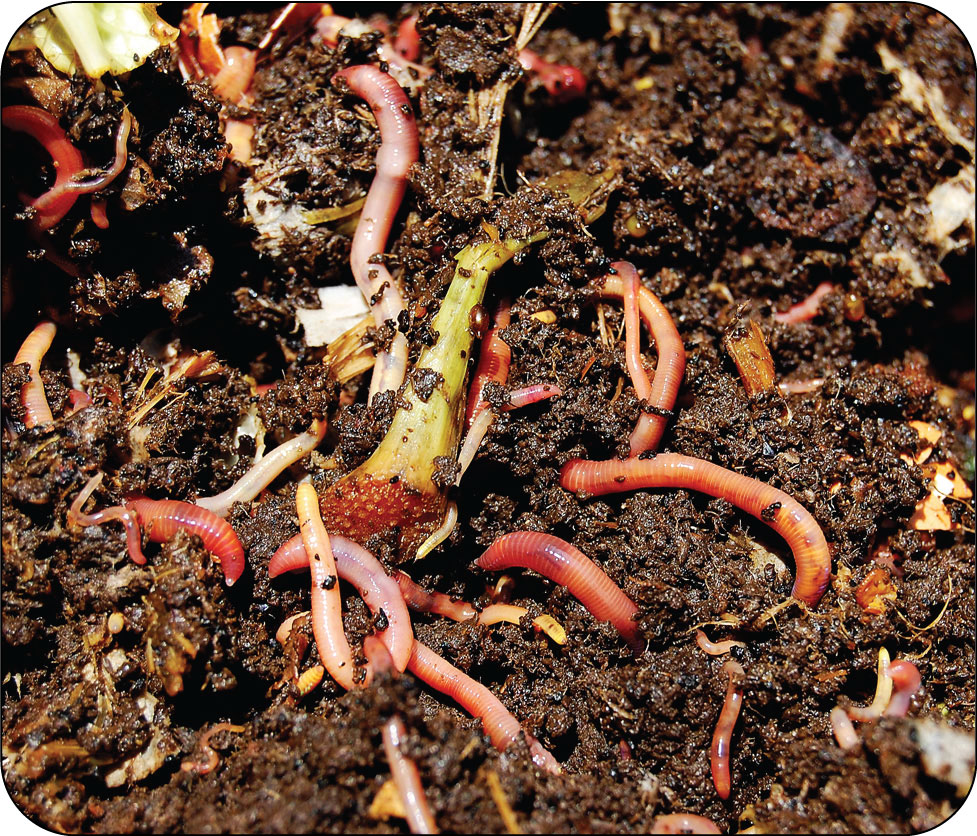 These wrigglers can be your employees and your product These wrigglers can be your employees and your productVermicomposting uses worms to compost organic waste, producing a nutrient-rich soil amendment known as vermicast (worm castings) . It's an eco-friendly method for recycling food scraps and other biodegradable materials. As it happens, I've learned a lot about vermicomposting. One of the requirements for a legal cannabis grow operation is to be able to dispose of the residue - leaves, stalks, trim - safely and securely. We plan to use large vermicompost bins, shred the residue, mix it with bedding from our ponies and feed it to the worms. The resulting vermicompost would be put back into the grow operation. On the commercial side, a few years ago I researched the idea of creating an industrial-scale vermicomposting facility at our local landfill, to divert and process organic waste. I got so far as presenting the idea to our town council; sadly, they didn't go for it. But, as I say, I learned a LOT about vermicomposting. As always, my advice is to research your market before launching this as a business. The setup is not complicated, but the business side can be. You can produce two products for sale: the vermicompost, and the worms. Find a market for each before you invest any money in a start-up. I looked at a lot of books and guides while researching vermicomposting. Here's a good place to start your own research Worm Farming Secrets. Among other reasons to recommend it, their book does a good job of explaining the business of vermicomposting. In fact the book is called The Business & Biology of Raising Com;posting Worms. The site also sells worms and worm composing gear. Farm Side Hustle #7 - Affiliate Marketing
First, what is affiliate marketing? It's marketing strategy where an person (the affiliate) promotes products or services for another company, earning a commission for each sale or action resulting from their referral. The usual setup involves personalized affiliate links, which track the sales or leads generated by the affiliate’s marketing efforts, promoted through blogs, social media, websites, or email lists (like the one you are reading right now). For example, I recently promoted a book called The Self-Sufficient Backyard to my email list of subscribers. I found the book to be packed full of useful information for the small grower or homesteader, and I was happy to recommend it to others - e.g. you folks. When someone buys The Self-Sufficient Backyard through my affiliate link, I get a commission. This Why should you consider affiliate marketing as a side hustle?
How to get started. You need 3 things:
Happy reading, happy earning! -Scott
|
See Something You Like? Share!
Comment or Question About This Topic?
Got something to say or story to tell about this? Share it!